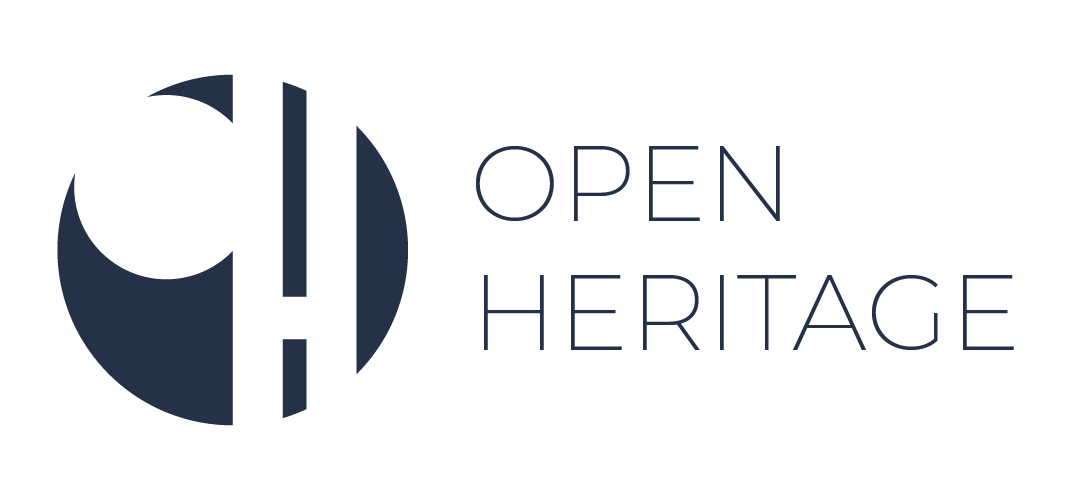The glossary entries are the result of a collaborative process among OpenHeritage consortium partners and have undergone an internal review. However, they only express the perspective of the authors listed under each term, not of all partners. You can find information on the glossary production process and the full glossary here.
Christian Darr
Stiftung trias, Hattingen (Ruhr), Germany; christian.darr@stiftung-trias.de
Rolf Novy-Huy
Stiftung trias, Hattingen (Ruhr), Germany; rolf.novy@stiftung-trias.de
Short definition
Credit and funding opportunities can be divided into equity and debt capital. “Genuine own money” (Stiftung trias 2017, 9), public funding, gifts and donations, cooperative and other company shares, and private loans are summarised as equity. Examples for debt capital are loans from public or special financing institutions, instruments of the German GLS Bank like “loan and gift community loans” (ibid.) or guaranteed loans, loans offered by the public sector, and land charge loans offered by local banks “Traditional” funding opportunities are deposits and loans, which are backed up by widely accepted security values (Schneck 2006, 11), like land property or building leases (Stiftung trias 2019, 16). In opposition, any other funding opportunities can be defined as “Alternative Credit and Funding Opportunities” (ACFO). A classification about what is “alternative” is defined, in accordance with their standards, by the risk management of each bank or money lender, in order to determine risks of lending capital to costumers and their and stability. Most banks see any loan which is not secured by land or buildings as “alternative” financing. In addition, people, who do not have access to the classic sources of funding, have developed new ways for getting access to capital and other sources needed for a project to become reality. “Alternative” means in a lot of cases sharing the risk within a group of people by dividing it and each backing it with small guarantees. Examples are company shares or “loan and gift community loans” or other different forms of crowd-investing.
A number of banks have developed guidelines to evaluate the risks of certain funding opportunities and are able to deal with these funding opportunities.
Key discussions around the term
The lack of a universally accepted definition is widely recognized in the relevant literature (Segal 2016; Obiora 2017). In addition, there are attempts in the literature to establish definitions regarding the different origins of money, with financial markets and banks being referred to as “traditional” and all other sources as “alternative” (Allen 2013, Segal 2016; Obiora 2017). When it comes to peer-to-peer-lending models (Bakker 2017) or the role of online tools (Segal 2016) the limits of these definitions become visible. The above-described example of the “loan and gift community loans”, which is offered by the German GLS Bank, would not be representable with the definition offered by the literature: While the loan is issued by the bank, the security is provided by a community, consisting of a number of people, each giving guarantees for a small amount of the total loan. The use of the internet has become absolutely normal, also an attempt to question the role of the provider of the online platform leads in the wrong direction.
In conclusion, it seems best to use risk and revenue structures in the decision-making process as a major factor for a definition that separates ACFOs from “traditional” instruments. In order to access certain target groups or markets, a number of banks are offering ACFOs and therefore they developed tools to assess the risks, most of them seem to still shy away from these funding opportunities. The reasons seem to be a lack of demand and the small size of the market. “Although the key traditional financing method of using bank loans for financing SME startups is still the most predominant financing method till today at the rate of being 72 times larger in terms of net worth when compared with alternative sources, the rapid rise in alternative financing methods cannot be denied” (Obiora 2017,45). Allen et al. showed that “[…] alternative financing channels play an important role in both developed and developing countries. In fast-growing emerging economies, the alternative financial system can be the most important source of external finance for firms” (Allen 2013, 3).
Reference list
Allen, Franklin, Elena Carletti, Jun “QJ” Qianc, Patricio Valenzuela, “Chapter 11 – Financial Intermediation, Markets, and Alternative Financial Sectors.” In Handbook of the Economics of Finance, Volume 2, Part A, edited by George M. Constantinides, Milton Harris, Rene M. Stulz, 759-798. Elsevier, 2013.
Bakker, Evan. “PEER-TO-PEER LENDING: How digital lending marketplaces are disrupting the predominant banking model.” Business Insider, June 23, 2015. https://www.businessinsider.com/peer-to-peer-lending-how-digital-lending-marketplaces-are-disrupting-the-predominant-banking-model-2015-5.
Obiora, Sandra Chukwudumebi, and Tamás Csordás. “The Case of Alternative Versus Traditional Financing: A Literature Review.” Archives of Business Research 5, no. 9 (2017): 42-53. https://doi.org/10.14738/abr.59.3581.
Patti, Daniela and Levente Polyák. Funding the Cooperative City. Vienna: Cooperative City Books, 2017.
Schneck, Ottmar. Handbuch Alternative Finanzierungsformen. Weinheim: WILEY-VCH Verlag, 2006.
Stiftung trias. Die Finanzierung zivilgesellschaftlicher Projekte. Hattingen: Stiftung trias, 2017. Stiftung trias. Bürgerfonds für Fachwerkstädte: Gemeinsames Forschungsprojekt. Hattingen: Stiftung trias, 2019.
